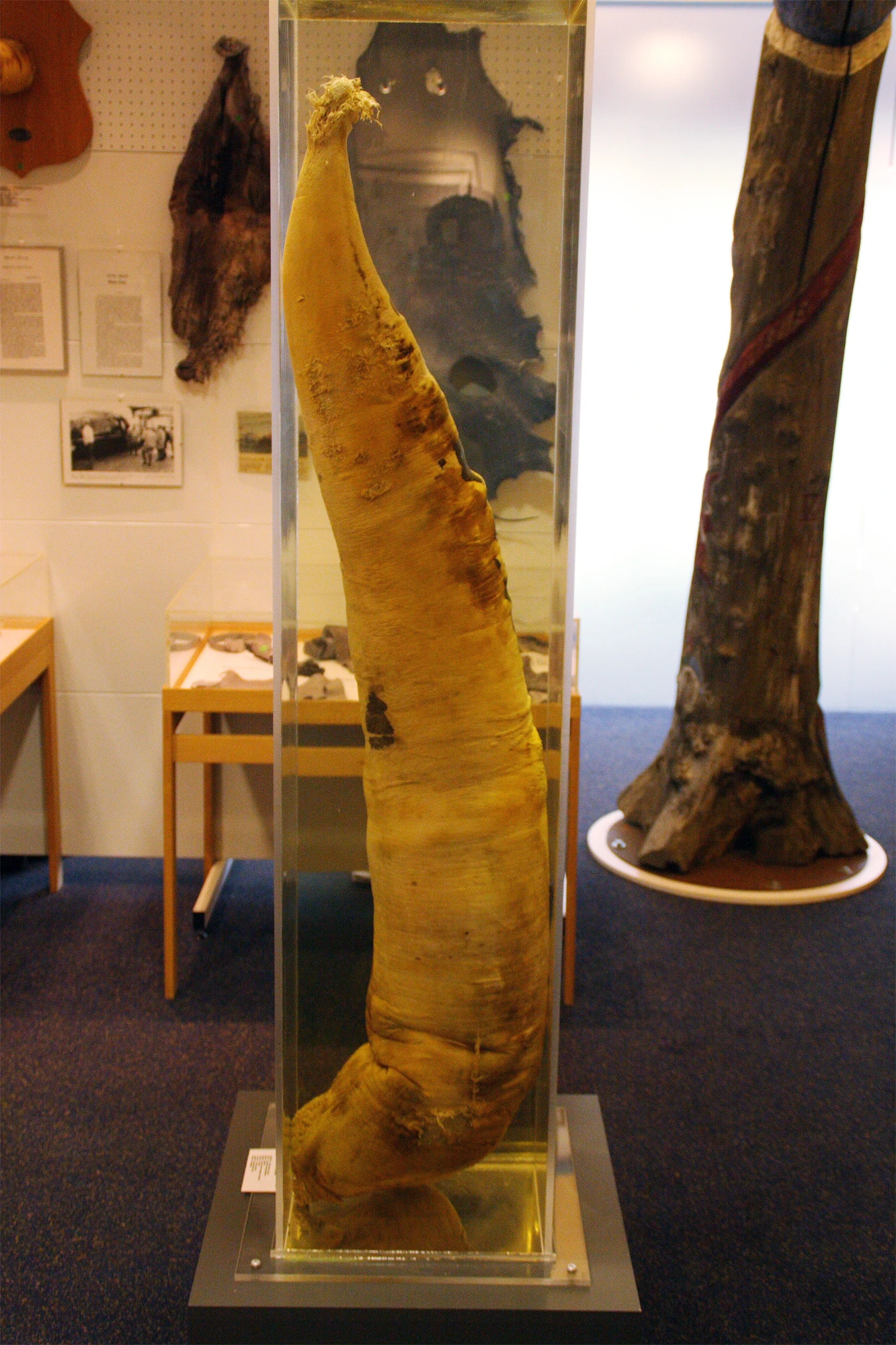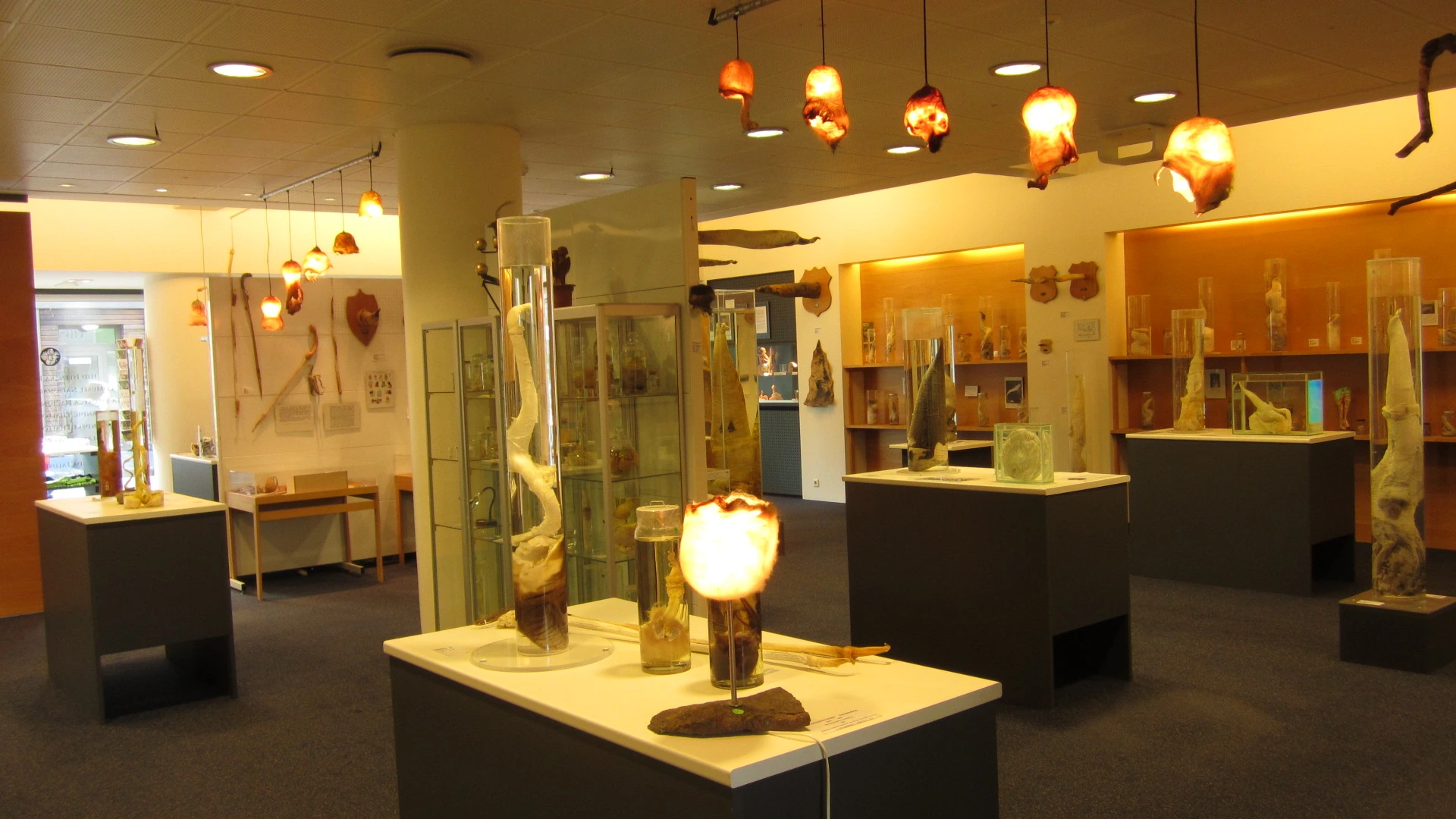




The Icelandic Phallological Museum
The Icelandic Phallological Museum, located in Reykjavik, is a unique and intriguing attraction. It is dedicated to the study and display of phalluses, or male reproductive organs, from various animal species. The museum was founded in 1997 by Sigurður Hjartarson, a former teacher who began collecting specimens as a hobby. Inside the museum, visitors can find over 200 different specimens from nearly every mammal found in Iceland, including whales, seals, and land mammals. The collection also includes folklore-related exhibits and artistic interpretations of phallic symbols. One of the museum's notable features is its effort to collect a human specimen, adding to its diverse array. The museum aims to educate people about the biological diversity and cultural significance of these organs. It uses humor and scientific information to engage visitors of all ages. Despite its unusual theme, the Icelandic Phallological Museum has gained popularity and attracts thousands of visitors each year. Overall, it offers an educational experience that combines biology with cultural history, making it a fascinating stop for anyone interested in learning about this aspect of nature.
Tuesday: 10:00 AM – 7:00 PM
Wednesday: 10:00 AM – 7:00 PM
Thursday: 10:00 AM – 7:00 PM
Friday: 10:00 AM – 7:00 PM
Saturday: 10:00 AM – 7:00 PM
Sunday: 10:00 AM – 7:00 PM
+354 561 6663
http://www.phallus.is/
The Area
Top ways to experience
The Icelandic Phallological Museum
What other travelers are saying about
The Icelandic Phallological Museum
Very interesting museum! Figured I would stop here while roaming the streets and it did pass time. Vet informative about the phallus of most creatures even the tiny ones. I was surprised there was whale phallus' there to view! The horse though... very interesting. All of it was good to learn about while touring the area. I'd recommend it to my friends.
A truly unique and fascinating museum! The Icelandic Phallological Museum offers an unusual yet educational experience. There is an entry fee, and to access the museum, café, and souvenir shop, you’ll need to walk down a flight of stairs. The collection is extensive and well-displayed, and the overall visit is both quirky and informative. Definitely a memorable stop if you're curious and open-minded!
It was definitely fun and unique experience. I would recommend to stop by and explore this museum while in Iceland. There is a lot of information to read about the museum and basic ideas on which it was created. Lots of animals genitalia to see up close. Some interesting facts as well. They have nice gift shop with a lot of souvenirs. You can easily spend there 2 hours just reading facts and walking around.
Nearby attractions to see
Frequently asked questions
What is The Icelandic Phallological Museum?
The Icelandic Phallological Museum, located in Reykjavik, is a unique museum dedicated to the collection and display of phallic specimens from various mammals. It contains over 200 penises and penile parts belonging to almost all land and sea mammals found in Iceland.
What can visitors expect to see at the museum?
Visitors can explore an extensive collection of phallic specimens, including those from whales, seals, and even a human donation. The museum also features art and artifacts related to the theme of phallology, providing both educational and humorous insights.
Is there an educational component to the exhibits?
Yes, the museum aims to educate visitors about the biological diversity of mammalian reproductive organs. Detailed descriptions accompany each specimen, offering insights into their anatomy, function, and significance within different species.
Are there any special events or tours available?
The museum occasionally hosts guided tours that provide more in-depth information about the collections and their scientific relevance. Special events may also be organized, focusing on particular themes or new acquisitions.
Who founded The Icelandic Phallological Museum and why?
The museum was founded by Sigurður Hjartarson in 1997 as a result of his personal interest in collecting phallic specimens. His fascination began as a childhood curiosity and evolved into a comprehensive collection aimed at scientific study and public education.


.webp)
.webp)
.webp)
.webp)





